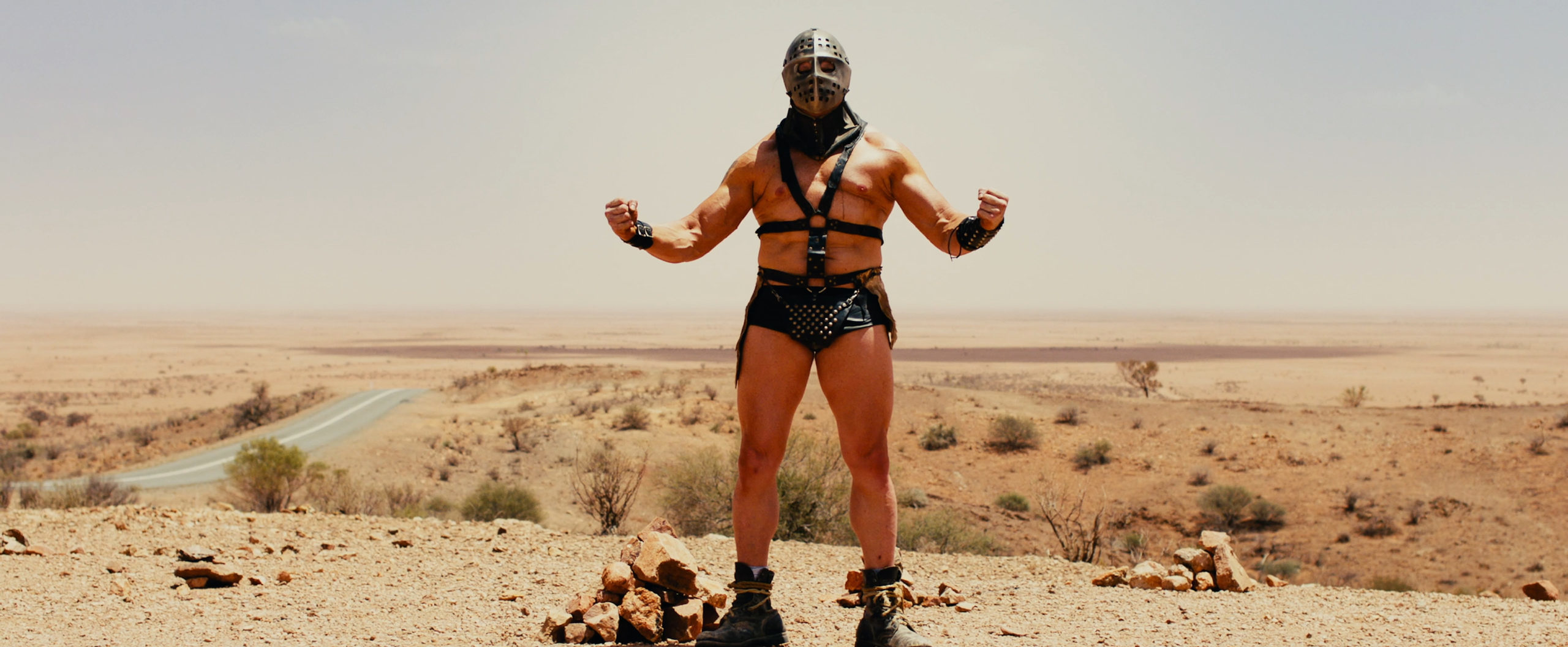Beyond the Wasteland
(Australia, 93 min.)
Dir. Eddie Beyrouthy
Fans of the Mad Max franchise will have a beautiful day with Beyond the Wasteland. This energetic look at the massively successful Australian action franchise captures the pulse of a global phenomenon. Director Eddie Beyrouthy plays to the fans here, but there’s something to savour in this study of unabashed movie geeks. Beyond the Wasteland shows how Mad Max was to audiences Down Under what Star Wars was to film buffs in the States. A national cinema can’t build itself up without an audience, and sometimes a souped-up bloodbath is the vehicle to do it.
Beyrouthy assembles a cast of colourful characters from Mad Max’s fervent fan base. Men don chaps and harnesses to mimic the apocalyptic gear of the Toecutter gang. They build replicas of the high-octane cars that Mel Gibson and company revved through the Outback. Beyond the Wasteland illustrates how Mad Max rivals Star Trek or Star Wars in terms of fandom that evokes cosplay.
While four decades have passed since the first installment director George Miller’s franchise exploded onto the scene, the fans still discuss Mad Max with giddy thrills. For many of them, it was the first time they sneaked into an R-rated movie. Beyond the adrenaline, however, the film recalls how Aussies shook with glee while seeing their homeland reflected onscreen in such a brutally awesome spectacle. The 2015 release of the Oscar-winning global smash Mad Max: Fury Road, meanwhile, put the pedal to the metal. The fandom reaches new generations, and Beyond the Wasteland captures the rush that unites fans young and old.
Missing Miller
Beyond the Wasteland admittedly misses many key interviews with its look at the Mad Max world. Miller appears only in archival interviews, although many of his talking points are salient moments in the film. He sees Mad Max as a heroic warrior driven by the prospect of a better tomorrow. This message resonates with the fans. The cast and crew who assemble at the Wasteland screening similarly echo it while reflecting upon their legacy. Gibson, meanwhile, receives little more than a passing mention, which might be best given his personal troubles, but the doc curiously downplays his role in the franchise’s success.
Similarly, Beyond the Wasteland offers very few clips from the franchise. Viewers who aren’t devoted fans might be lost. Casual viewers who last encountered the franchise upon Fury Road’s release might be equally adrift. Questions of access, or lack thereof, hang over the film.
The film does include a handful of bit players who gained cult status after appearing in Mad Max. Late actor Bertrand Cadart, for example, relishes the opportunity to revisit his first screen credit. Playing Clunk, the intellectually challenged member of the Toecutter gang, Cadart made a name for himself in Australia as a young man from France. He’s a colourful character, arguably the highlight of the doc, who doesn’t downplay the thrill of contributing to a touchstone. Cadart, who passed in 2020 following a battle with leukemia, confronts the inevitability of his death and thanks the fans who made him immortal.
Biz and Fuel Efficiency
Other novel corners of the doc explore the Mad Max phenomenon within the larger sphere of moviemaking. A section on the critics—those annoying no-fun naysayers!—considers why writers panned the movie. Beyrouthy features soundbites from reviews that decried the violence, but contrasts them with views from cinephiles who loved the adrenaline rush. The film admittedly misses an opportunity to unpack the massive critical success of Mad Max: Fury Road and consider how tastes change. An opening night slot at Cannes, six Oscar wins, and a worldwide box office of $375 mill is a lot to downplay in the franchise’s trajectory. The film still positions the fans as cult followers when, really, Mad Max became as mainstream as films could get. That’s quite a journey.
Boffo box office in Japan, meanwhile, proved that the original Mad Max wasn’t just a local spark. It helped the film hit American screens, and the rest is history. The business side of the documentary illustrates the challenges that even commercial films from English-speaking markets have while confronting the beast of Hollywood. Fandom is more than simply a local affair as Japanese fans of the Road Warrior make annual pilgrimages to the Outback.
It’s also fun to see the production’s impact on local residents. A former hotel manager recalls the peculiar sight of all the apocalypse-ready extras. Rather than regular cars, crews fashioned hell on wheels and burned rubber in the Outback. The film shows how Mad Max grew fans with equal parts novelty and pride. When a film starts as a local hit, it can become a global sensation. There’s a lot to learn from Mad Max—namely, fuel efficiency and mileage.













